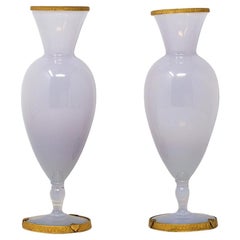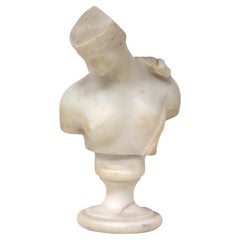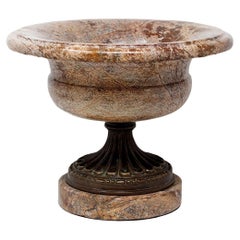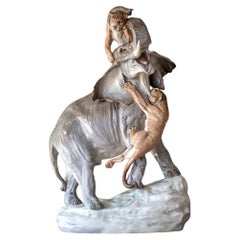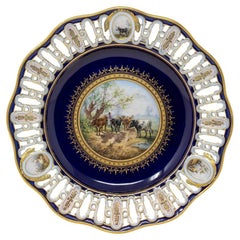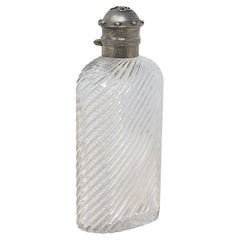Jacksons Antique
Antique Late 19th Century French Belle Époque Vases
Bronze, Ormolu
Antique Early 19th Century Italian Grand Tour Busts
Carrara Marble
Antique Late 19th Century French Grand Tour Centerpieces
Marble, Bronze
Early 20th Century Czech Art Deco Animal Sculptures
Ceramic, Porcelain
Antique Mid-19th Century German High Victorian Porcelain
Porcelain
Antique Late 19th Century English High Victorian Barware
Silver, Sterling Silver
Antique Late 19th Century Swiss Art Nouveau Animal Sculptures
Marble
Antique Late 19th Century Austrian Belle Époque Ceramics
Ceramic, Porcelain
Antique Early 1800s English George III Sterling Silver
Silver, Sterling Silver
Antique Late 19th Century Austrian Art Nouveau Animal Sculptures
Onyx, Bronze
Antique Late 18th Century English George III Sterling Silver
Silver, Sterling Silver
Antique Late 19th Century Austrian Art Nouveau Table Lamps
Marble, Bronze
Antique Mid-19th Century Japanese Edo Sculptures and Carvings
Wood, Boxwood
Mid-20th Century Japanese Mid-Century Modern Vases
Silver Plate, Enamel
Antique Late 19th Century Austrian Ceramics
Ceramic, Porcelain
Antique Early 1900s French Art Nouveau Snuff Boxes and Tobacco Boxes
Gold, Silver, Enamel
Vintage 1910s Japanese Meiji Vases
Silver, Enamel
Antique Late 18th Century British George III Snuff Boxes and Tobacco Boxes
Steel
Antique Late 19th Century German High Victorian Decorative Art
Porcelain
Mid-20th Century Japanese Art Deco Vases
Silver, Enamel
Mid-20th Century Japanese Art Deco Vases
Silver, Enamel
Antique Late 19th Century Swiss Art Nouveau Children's Furniture
Wood
Early 20th Century French Art Deco Animal Sculptures
Bronze
Antique Early 1900s English Art Nouveau Cigar Boxes and Humidors
Silver, Sterling Silver, Enamel
Antique Late 19th Century French Belle Époque Animal Sculptures
Bronze
Antique Early 1900s Japanese Meiji Metalwork
Enamel, Wire
Antique Late 19th Century Japanese Meiji Vases
Ceramic, Earthenware, Pottery
Antique Late 19th Century French Belle Époque Vases
Metal, Enamel
Antique Early 1900s Japanese Meiji Ceramics
Ceramic, Earthenware, Pottery
Antique Early 1900s Austrian Vienna Secession Figurative Sculptures
Bronze
Antique Early 1900s Scottish Arts and Crafts Mounted Objects
Bronze
Early 20th Century English Art Nouveau Table Mirrors
Silver, Cut Steel
Antique Late 19th Century Italian High Victorian Figurative Sculptures
Bronze
Antique 19th Century English High Victorian Barware
Silver, Sterling Silver
Antique Late 19th Century Austrian High Victorian Tea Sets
Ceramic, Porcelain
Antique Late 19th Century French Belle Époque Animal Sculptures
Bronze
Antique Late 19th Century German Art Nouveau Ceramics
Porcelain, Gesso
Antique Late 19th Century Japanese Meiji Sculptures and Carvings
Bronze
Antique Early 1900s Japanese Meiji Ceramics
Earthenware, Pottery
Antique Late 19th Century French Belle Époque Bottles
Gold, Enamel
Antique Late 19th Century French Aesthetic Movement Vases
Slate, Bronze, Ormolu
Antique Late 19th Century Swiss Black Forest Animal Sculptures
Wood
Early 20th Century German Art Deco Porcelain
Porcelain
Antique Late 19th Century French Belle Époque Urns
Onyx, Bronze, Enamel, Ormolu
Mid-20th Century Japanese Showa Vases
Enamel, Metallic Thread
Antique Early 1900s Japanese Meiji Metalwork
Metal, Enamel, Metallic Thread
Antique 1890s German Art Nouveau Barware
Metal, Silver Plate
Antique Late 19th Century French Louis XIV Candelabras
Metal, Bronze, Ormolu
Antique Late 19th Century French Belle Époque Busts
Bronze
20th Century Japanese Meiji Vases
Metal, Silver, Enamel, Metallic Thread
Antique Late 19th Century French Belle Époque Figurative Sculptures
Marble, Bronze, Ormolu
Early 20th Century Japanese Meiji Tea Sets
Metal, Enamel, Metallic Thread
Early 20th Century English Animal Sculptures
Multi-gemstone, Onyx, Rock Crystal
Antique Mid-19th Century French Louis Philippe Ceramics
Ormolu
Antique Late 19th Century Japanese Meiji Sculptures and Carvings
Bronze
Early 20th Century English Art Deco Sheffield and Silverplate
Metal, Silver Plate
Antique Late 19th Century Japanese Meiji Animal Sculptures
Bronze
Antique Late 19th Century British Late Victorian Pitchers
Silver, Sterling Silver
Early 20th Century Central American Art Nouveau Glass
Silver, Sterling Silver
Early 20th Century German Art Nouveau Sheffield and Silverplate
Metal, Silver Plate
